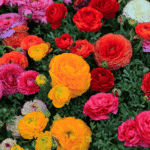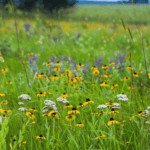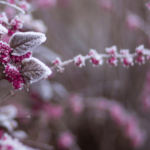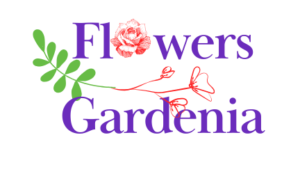
Beautiful flowers gardenia Plants For Your homes
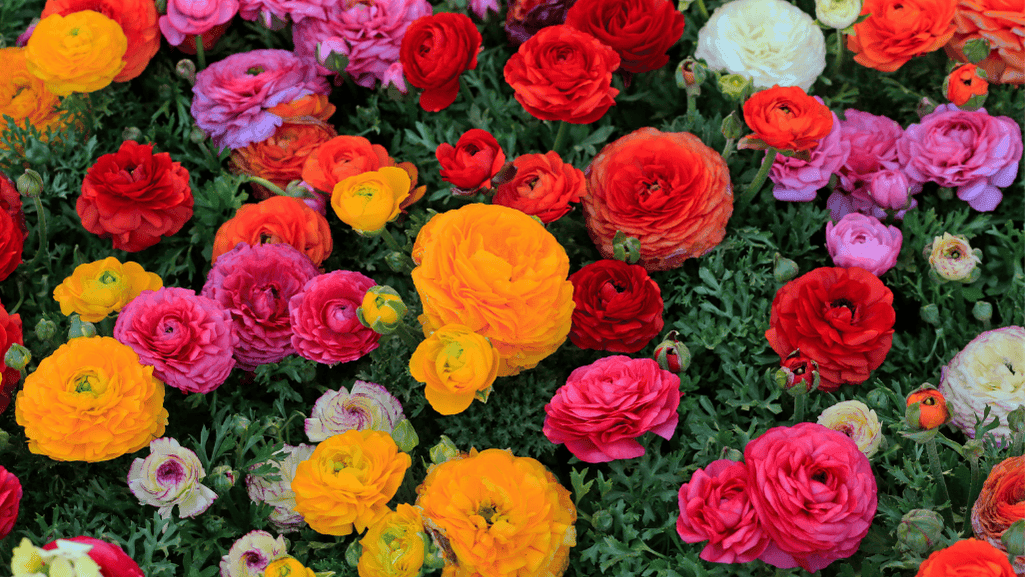
Turn your garden into a vibrant oasis with colorful flowers. With over 400,000 flower varieties, you can make a stunning flower bed. It can show off a rainbow of colors and textures.
Choose from quick-growing annual flowers or long-lasting perennials. Annuals like zinnias, petunias, and marigolds add color easily. Perennials like daylilies, coneflowers, and phlox bring lasting beauty and attract pollinators.
Plan your garden based on your zone, soil, sun, and moisture. The right flowers will thrive and make your garden vibrant. A well-designed bed can show off stunning colors and add interest with different heights and textures.
Let flowering plants turn your landscape into a colorful haven. From delicate nasturtiums to striking sunflowers, flower gardening is full of possibilities. Start your colorful garden journey and enjoy the beauty of your outdoor space.
Adding vibrant hues to your garden can make your landscape design pop. Colorful blooms make your garden more attractive and draw in pollinators. They also bring happiness to those who see them. Mix different flowering annuals and perennials for a beautiful display all season.
Annuals like zinnias, cosmos, and sunflowers are great for beginners. They grow easily and come in many colors. A survey found zinnias, cosmos, and sunflowers are top picks for new gardeners. Plant them in a 2:2:1 ratio for a balanced look.
Perennials are a long-term investment in your garden. They may cost more upfront but come back year after year. Flowering perennials like daylilies and coneflowers add color and attract pollinators with less upkeep.
Choose plants that fit your garden’s needs. Most annuals and perennials need full sun, but some can handle shade. Knowing your garden’s conditions helps your plants thrive.
“Flowers always make people better, happier, and more helpful; they are sunshine, food and medicine for the soul.” – Luther Burbank
Adding colorful flowers to your garden boosts its beauty and benefits the environment and you. By following these tips, you can create a beautiful outdoor space that brings joy for years.
Adding vibrant blooms to your garden brings many benefits. They make your home look inviting and beautiful. Flowers like butterfly weed and lantana attract bees, butterflies, and hummingbirds, helping your garden thrive.
Colorful gardens also give you fresh cut flowers for your home. They can help you relax and feel better. Studies show that gardening can lower stress and improve your mood.
| Flower | Benefits |
|---|---|
| Marigolds | Bright, pest-resistant, and easy to grow |
| Zinnias | Offer a rainbow of shades and attract pollinators |
| Coneflowers | Attract pollinators and provide seeds for songbirds |
| Nasturtiums | Edible flowers that can help lower pest populations |
A diverse garden attracts more beneficial insects and birds. To support birds like chickadees, your garden should have at least 70% native flowers. Adding flowers like purple coneflowers and sunflowers creates a haven for these creatures.
Flowers always make people better, happier, and more helpful; they are sunshine, food and medicine for the soul. – Luther Burbank
In summary, vibrant blooms in your garden offer many benefits. They improve curb appeal, support pollinators, and provide fresh flowers. They also promote well-being and enhance your garden’s beauty and diversity. By choosing the right flowers for your climate and soil, you can create a stunning and therapeutic garden.
When picking flowers for your garden, think about your local growing conditions. This includes hardiness zones, soil type, sun exposure, and moisture needs. By picking plants that fit your environment, you can make a garden that’s full of life and color. It will bring joy and beauty to your outdoor space for years.
Hardiness zones are areas based on the coldest winter temperatures. Knowing your zone helps pick plants that can handle your area’s cold. The USDA divides the U.S. into 13 zones, from Zone 1 (coldest) to Zone 13 (warmest). Choose flowers for your zone to ensure they thrive in your climate.
Soil type is key for plant growth. There are sandy, loamy, and clay soils, each with its own needs. Sandy soils need more water and food, while clay soils hold moisture but can get soggy. Loamy soils, a mix, are best for most plants.
Knowing your soil type helps pick the right flowers. Or, you can add organic matter to improve your soil.
| Soil Type | Characteristics | Suitable Flowers |
|---|---|---|
| Sandy | Fast-draining, low nutrient retention | Coreopsis, Gaillardia, Sedum |
| Loamy | Well-balanced, good drainage and nutrient retention | Asters, Black-Eyed Susans, Phlox |
| Clay | Slow-draining, high nutrient retention | Daylilies, Iris, Canna Lilies |
Sun and moisture needs are important for plants. Some love full sun, while others prefer shade. Some plants can handle dry conditions, while others need constant water. Choose plants that match your sun and moisture levels.
Group plants with similar water needs together. This creates microclimates and makes watering easier.
By understanding your hardiness zone, soil type, sun exposure, and moisture requirements, you can select the perfect flowers for your garden and create a stunning, colorful display that will thrive in your local growing conditions.
Annual flowers are great for adding color to your garden. They grow fast and bloom often, changing your garden’s look all season. You can choose from many types, like petunias and zinnias, to match your style.
When picking annuals, think about their height, color, and texture. Mix different types for a lively look. You can go for one color or many, making your garden a work of art.
Zinnias are loved for their wide range of colors and sizes. They fit any garden spot, from small edges to tall stands. These easy-to-grow flowers attract butterflies and hummingbirds. You can find zinnias in pink, red, orange, yellow, purple, and white.
Petunias are known for their long-lasting colors. They come in many colors, from soft to bold. These flowers are easy to care for and work well in hanging baskets and containers. They bloom all season, adding vibrant colors to your garden.
| Petunia Variety | Color Range | Growth Habit |
|---|---|---|
| Supertunia Vista | Pink, purple, red, white | Trailing, spreading |
| Wave Petunias | Pink, purple, blue, white | Spreading, mounding |
| Cascadia Petunias | Pink, red, yellow, purple | Mounding, compact |
Marigolds add yellow, orange, and red to your garden. They’re not just pretty; they also keep pests away. Their strong scent helps protect vegetables and other plants. They love the sun and don’t need much water, making them easy to care for.
Marigolds are like bright little suns in the garden, radiating warmth and cheer wherever they grow.
Using zinnias, petunias, marigolds, and more, you can make your garden change and grow. Try different colors and heights to find what works best for you. With so many annual flowers, you can make your garden truly special.
Perennial flowers are a gardener’s best friend for a vibrant, low-maintenance garden. Unlike annuals, they come back every year, offering color and beauty. With many shapes, sizes, and colors, they make a stunning garden.
Daylilies are loved for their toughness and variety. You can find a color and form for any garden. For example, ‘Stella d’Oro’ blooms from spring to early fall in zones 3 to 10.
It grows 9 to 12 inches tall and wide. Daylilies are easy to care for, thriving in different soils and light.
Coneflowers attract butterflies and bees with their beauty. They come in purple, pink, orange, and yellow. These perennials bloom from summer to fall in zones 3 to 9.
Purple coneflowers can grow 12 to 36 inches tall and 12 to 24 inches wide. They brighten any garden and help local ecosystems.
Phlox delights with its fragrance and beauty. It comes in pink, purple, and white, creating a romantic garden. Phlox blooms from mid-summer to early fall, reaching up to 4 feet tall.
Its fragrance attracts butterflies and hummingbirds, adding interest to your garden. To keep your perennials looking great, divide them every few years. This keeps them healthy and prevents overcrowding.
With the right care and selection, your garden will bloom beautifully for years. It will bring natural beauty to your space.
| Perennial | Bloom Time | Height | Width | Hardiness Zones |
|---|---|---|---|---|
| Daylily ‘Stella d’Oro’ | Spring to Early Fall | 9-12 inches | 10-12 inches | 3-10 |
| Purple Coneflower | Summer to Fall | 12-36 inches | 12-24 inches | 3-9 |
| Catmint | Late Spring to Early Fall | 6-12 inches | 12-36 inches | 3-9 |
| Salvia | Spring to Early Fall | 12-60 inches | 12-48 inches | 5-10 |
Making your garden look amazing is more than picking colors. You need to think about garden design, like color harmony and texture. Also, consider plant heights, focal points, and how things repeat.
Color harmony is key. Try pairing colors like orange and blue for a striking look. Or, use colors next to each other on the color wheel for a calm feel. For elegance, pick one color in different shades.
Texture adds depth to your garden. Mix soft flowers with bold ones. Add leaves with different feels for a rich look.
Plant heights matter too. Use tall plants in the back and shorter ones in front. This makes your garden look deep and interesting.
“In my years of experience designing flower gardens, I’ve found that the most memorable and impressive combinations are those that incorporate a variety of colors, textures, and heights. It’s not just about the individual blooms, but how they work together to create a cohesive and captivating display.” – Sarah Johnson, Landscape Designer
Think about focal points to draw the eye. A big plant can be the center. Put smaller flowers around it for a nice look.
Rhythm and repetition are key. Use the same colors and shapes to tie your garden together. For example, use the same bright colors in different flowers.
| Flower Combination | Color Scheme | Height Variation |
|---|---|---|
| ‘Storm Blue’ petunias and ‘Maverick White’ geraniums | Complementary (Blue and White) | 14 inches (petunias) and 16 inches (geraniums) |
| ‘Liberty’ snapdragons and ‘Fantasy Pink’ petunias | Analogous (Pink and Purple) | 22 inches (snapdragons) and 12 inches (petunias) |
| ‘Red Hot Sally’ salvia and ‘Vancouver Centennial’ geraniums | Monochromatic (Shades of Red) | Both grow to 12 inches tall |
By mixing colors, textures, and heights, you can make your garden stand out. Try new things and let your garden show off your creativity. For more ideas, check out The Celtic Farm for great flower pairings.
Creating a stunning flower bed needs careful planning. Choose a color palette that works well together. Layer plants for interest and add texture and height for a lively space.
Start by picking a color scheme for your flower bed. Think about the mood you want in your garden. Use colors that go well together.
Monochromatic schemes use different shades of one color for calmness. Complementary colors like purples and oranges add energy. Warm colors like reds and oranges make spaces cozy. Cool colors like blues and greens are calming.
| Color Scheme | Effect | Example Plants |
|---|---|---|
| Monochromatic | Calm and orderly | Shades of pink: Dianthus, Phlox, Peony |
| Complementary | Vibrant and energetic | Purple and orange: Salvia, Coneflower, Daylily |
| Warm colors | Cozy and inviting | Red, yellow, orange: Marigold, Zinnia, Canna Lily |
| Cool colors | Serene and relaxing | Blue, purple, green: Delphinium, Ageratum, Hosta |
Layer plants by height for a beautiful garden. Put tall plants like shrubs in the back. Use medium plants in the middle and short ones in the front.
This makes your garden look deep and interesting. It also makes sure all plants get sunlight.
Arranging plants by height and structure makes your garden bed look great and ensures all plants get sunlight.
Texture and height are key in flower bed design. Mix different plant shapes and textures for interest. Use plants with fine and bold textures together.
Varying plant heights makes your garden lively. Repeat plants to create rhythm. Place taller plants at the back and similar ones at each end to define your bed’s shape.
By choosing colors, layering plants, and adding texture and height, you can make a beautiful flower bed. It will enhance your landscape and be interesting all year.
To keep your colorful flower garden looking its best, proper care is essential. Effective watering techniques are crucial for the health and vibrance of your blooms. Water your flowers deeply and regularly, especially during dry spells. Adjust your watering schedule based on rainfall and plant needs. Most flower gardens require at least 1 inch of water per week from rainfall or irrigation.
Fertilizing flowers is another important aspect of garden maintenance. Flowers need nutrients that support bigger, better blooms, such as Pennington UltraGreen Color Blooms & Bulbs 15-10-10 with added iron during the growing season. Apply fertilizer according to the specific requirements of your plants to encourage healthy growth and abundant blooms.
Deadheading blooms is a simple yet effective way to promote continuous blooming and keep your plants looking tidy. Remove spent flowers regularly to encourage your plants to produce more blooms. Dedicate time weekly to deadhead your flowers and maintain their beauty.
Mulching benefits your flower garden in several ways. Apply a 2-3 inch layer of mulch to retain moisture, suppress weeds, and regulate soil temperature. Organic mulches, such as bark chips or shredded leaves, also improve soil quality as they decompose over time.
Pest control and disease prevention are essential for maintaining a healthy and vibrant flower garden. Monitor your plants regularly for signs of pests or disease, and take appropriate action to prevent damage. Sevin Insect Killer products can kill more than 500 insects by contact and protect flower gardens for up to three months.
| Pest | Symptoms | Control Measures |
|---|---|---|
| Aphids | Stunted growth, curled leaves, sticky honeydew | Spray with insecticidal soap or neem oil |
| Japanese Beetles | Skeletonized leaves, damaged flowers | Hand-pick beetles, use beetle traps |
| Powdery Mildew | White, powdery fungal growth on leaves | Improve air circulation, apply fungicide |
Pruning tips are another important aspect of garden maintenance. Prune your plants as needed to maintain their shape and remove any dead, damaged, or diseased foliage. Some flowering shrubs, like lush hydrangeas, prefer sites with morning sun and afternoon shade. Plants like azaleas and some hydrangeas prefer soil pH in the acidic range.
“A well-maintained flower garden is a work of art that showcases the beauty and diversity of nature.”
By following these care tips and staying attentive to your plants’ needs, you can create a stunning and vibrant flower garden that will be the envy of your neighborhood.
Colorful flowers make your garden beautiful and help attract pollinators. They draw in butterflies, hummingbirds, and bees. By picking a variety of bright flowers, you help your garden support wildlife and keep the ecosystem balanced. Different pollinators like different colors and smells, so choose the right plants for your garden.
Butterflies love bright, flat flowers for landing and getting nectar. They like red, orange, pink, and purple flowers. Some good choices are:
Butterfly plants like milkweed and coneflowers give nectar and host caterpillars. This supports the whole life cycle of these pollinators.
Hummingbirds go for tubular flowers in red, orange, and pink. Some of their favorites are:
These flowers attract hummingbirds with their colors and offer nectar. Planting different hummingbird favorites keeps them fed all season.
Bees like blue, purple, white, and yellow flowers. They prefer easy-to-reach, nectar-rich flowers. Some good options are:
Bees also like certain smells like lavender and mint. Adding these plants helps bees pollinate and keeps your garden healthy.
Planting a diverse range of flowers that bloom at different times attracts pollinators continuously throughout the growing season.
| Pollinator | Color Preferences | Flower Shapes | Recommended Plants |
|---|---|---|---|
| Butterflies | Red, orange, pink, purple | Flat-topped, clustered | Zinnias, coneflowers, milkweed |
| Hummingbirds | Red, orange, pink | Tubular, trumpet-shaped | Bee balm, fuchsia, trumpet vine |
| Bees | Blue, purple, white, yellow | Tubular, bell-shaped, composite | Lavender, sunflowers, catmint |
Creating a pollinator garden with colorful blooms makes your garden beautiful. It also helps protect pollinators and increases biodiversity. Choose native plants for the best nectar sources for local pollinators. With the right plants, your garden will be full of life and support wildlife.
Adding colorful flowers to your garden is a great way to make your outdoor space lively and inspiring. You can choose from easy-to-grow flowers like marigolds, zinnias, and sunflowers. Even beginners can create a beautiful garden with these options.
By picking flowers that match your climate and soil, you can make a garden that shows off your style. This way, your garden will be full of colors all year round.
Flowers are not just pretty; they also help us and wildlife. Being around flowers can make us feel less stressed and happier. They also help bees, butterflies, and hummingbirds by providing food.
Whether you like a neat knot garden or a wildflower garden, different flowers add excitement. They bring together colors, shapes, and textures in a beautiful way.
Starting your flower garden takes time and effort, but it’s worth it. With good planning and care, you can make a beautiful outdoor space. This can even make your property more valuable.
So, get creative with your garden. Try out different flower mixes and enjoy watching your garden grow. With these tips, you’ll have a garden that everyone will admire.


